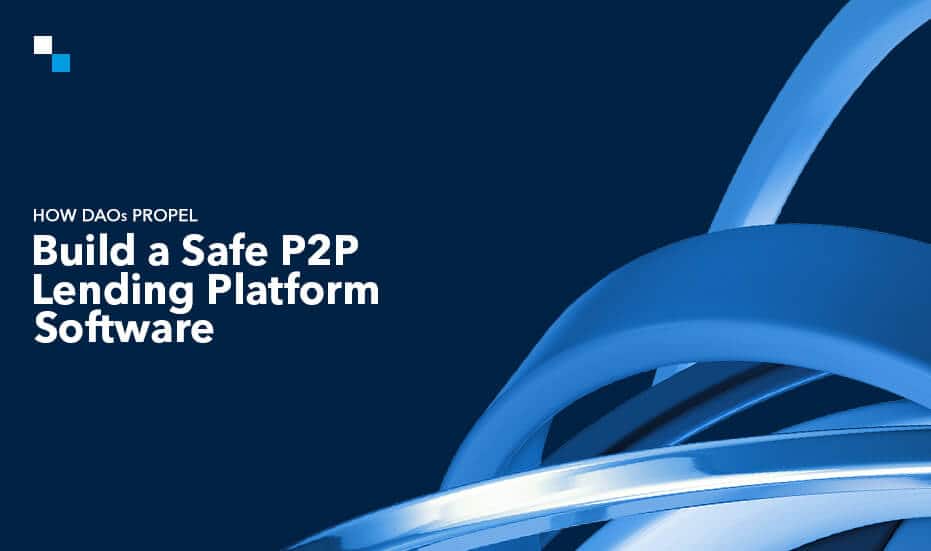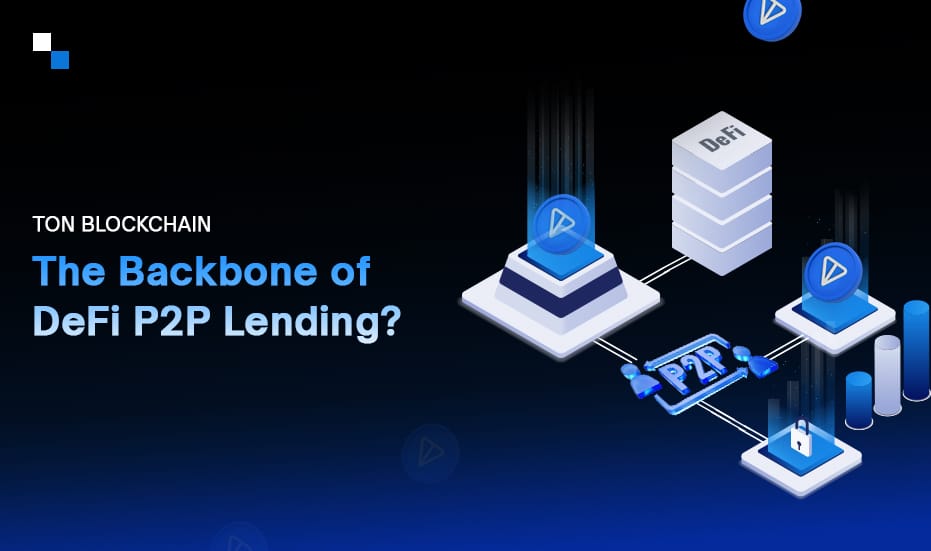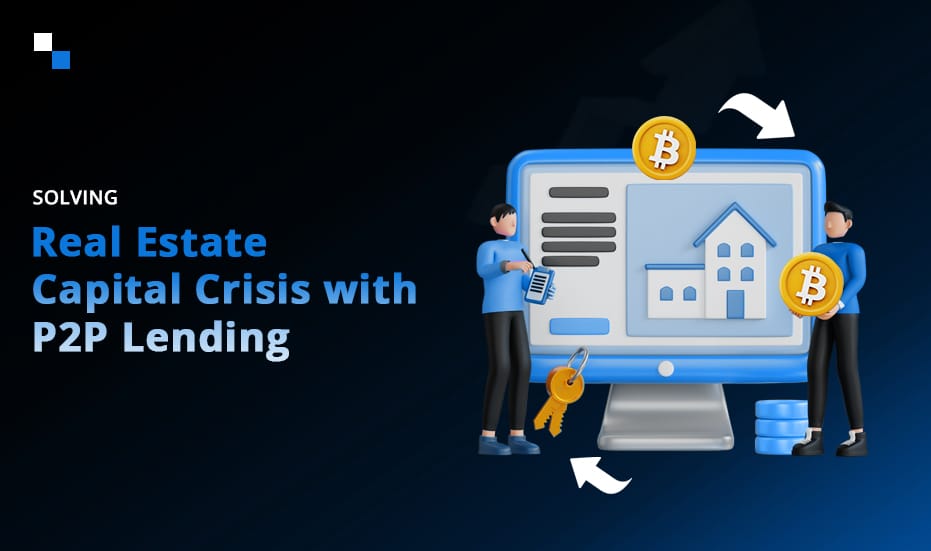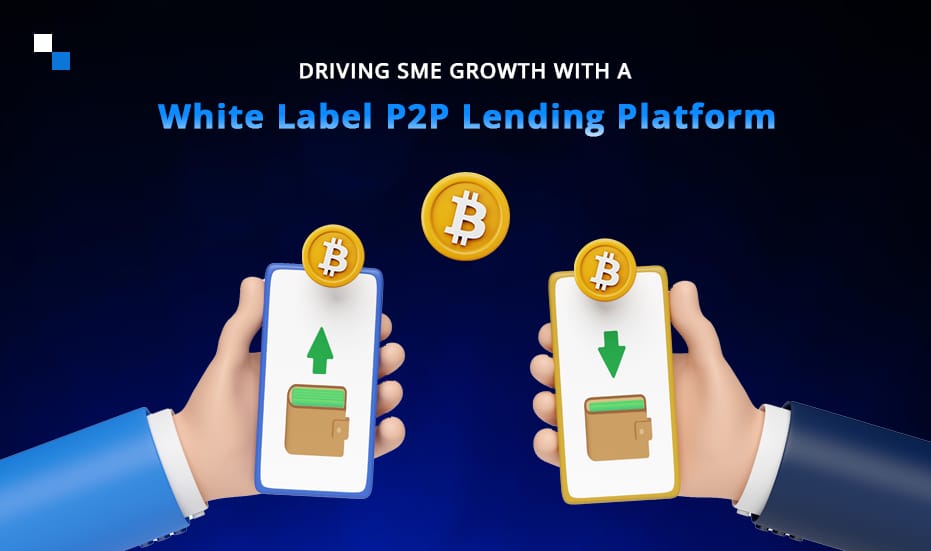
The Impact of DAOs on the Growth and Evolution of DeFi
August 23, 2024
White Label TRC20 Custodial Wallet: Crafting an API Supported Solution
August 24, 2024Development of secure Peer to Peer lending software requires effective fraud prevention strategies. This can be achieved by integrating multi-factor authentication and identity verification into the software to help develop secure measures. Advanced algorithms and machine learning techniques will help in identifying and eliminating suspicious activities within real-time monitoring systems.
Furthermore, integrating advanced algorithms and machine learning techniques in a P2P lending platform software readily help detect and quash suspicious activities across real-time monitoring systems.
Opting for white label P2P lending platform development? An effective anti-fraud framework protects not only the platform from malicious activities but also builds trust among users in a safe and reliable environment for peer-to-peer lending transactions.
|
Fraud Prevention Tips
1. Advanced Identity Verification
A robust identity verification system at the core will give impetus to the strengthening of a secure Peer to Peer lending software. There may be several paths to security; one of them is implementing multi-factor authentication (MFA).
You also need to implement the following advanced techniques:
- Biometric verification: Fingerprint scan, facial recognition, or voice verification.
- Document authentication: AI can be used in document scanning to verify government-issued identity cards and other official documents.
- Liveness detection: To make sure the person being verified is physically present at verification, allow them to take video selfies or real-time problems.
These measures lower the chances of identity theft and creation of fake accounts, common entry points for fraudsters looking to attack any P2P lending platform software.
2. Machine Learning for Fraud Detection
Incorporating machine learning algorithms into your Peer to Peer lending software can markedly enhance fraud detection capabilities. It will make the software proficient in analyzing large datasets to identify patterns and anomalies that may reveal fraudulent activities. Significant areas for the application of machine learning include:
- Behavioral Analysis: Observe user activities for determining anomalous patterns in the actions. This includes transaction monitoring to identify potentially suspicious transactions or lending patterns.
- Risk scoring: Creating a dynamic profile of a user based on activities and characteristics with regard to potential risks.
By continuously learning from new data, these systems become more effective over time, adapting to new fraud tactics as they emerge.
3. Blockchain Technology for Transparency and Security
Including blockchain technology into your white label P2P lending platform development project can make it well-secured, along with substantially transparent. Some of the features of blockchain technology include:
- Immutable record keeping: Each transaction will be captured via immutable ledger.
- Smart Contracts: Automate loan agreements and repayments, reducing the risk of manipulation.
- Decentralization: Distributing data across several nodes increases the level of difficulty for hackers looking to compromise the system.
One can create a trusted environment within Peer to Peer lending software through the application of blockchain. In essence, it provides a safer infrastructure for financial transactions between users in the case of P2P lending with blockchain.
4. Real-time Monitoring and Alerts
Real-time monitoring is very essential in fraud detection and prevention at the instance of occurrence.
Your P2P lending platform software should have the following features:
- Transaction monitoring: Flag unusual transaction patterns or amounts.
- Login attempt tracking: Detect multiple failed login attempts or logins from unusual locations.
- Borrower behavior analysis: Monitor sudden changes in borrowing patterns or loan applications.
Coupled with an efficient alert system, real-time monitoring allows for quick responses to potential fraud attempts, minimizing damage and protecting users.
5. Comprehensive Data Encryption
Security and safety of users’ information are considered key aspects of white label P2P lending platform development. End-to-end encryption in all data transmissions and storage shall be implemented. This shall include:
- SSL/TLS encryption for all web traffic
- Encryption of stored data, including personal information and financial records
- Secure key management practices to protect encryption keys
Additionally, regularly updating encryption protocols ensures that your platform stays ahead of emerging security threats.

6. Strict Access Controls and User Permissions
The granular access control in your P2P lending platform software guarantees internal fraud prevention and unauthorized access avoidance. Consider the following:
- Role-based access control (RBAC): In particular, give specific permissions to a certain set of users based on their roles.
- Principle of least privilege: Provide users with only those privileges that are essential for the completion of their tasks.
- Regular access audits: Periodically review and update user permissions.
These measures prevent unauthorized actions and damage from occurring if an account gets compromised.
7. Anti-Money Laundering (AML) Compliance
Any Peer to Peer lending software should ensure robust measures against money laundering. This helps prevent fraud and ensures compliance with regulatory requirements. Key Components:
- Know Your Customer (KYC) procedures: Thorough vetting of users during onboarding.
- Transaction monitoring: Flagging suspicious patterns that may indicate money laundering.
- Reporting mechanisms: Automated systems for generating and submitting required reports to regulatory bodies.
By prioritizing AML compliance, platforms can build trust with users and regulators alike.
8. Regular Security Audits and Penetration Testing
Conducting regular security audits and penetration testing is essential for identifying vulnerabilities in your P2P lending platform software. This process should include:
- Code reviews: Regular examination of the software’s source code for potential security flaws.
- Vulnerability assessments: Systematic review of security weaknesses in the system.
- Penetration testing: Simulated cyberattacks to test the platform’s defenses.
By proactively identifying and addressing vulnerabilities, platforms can stay one step ahead of potential attackers.
9. User Education and Awareness
While robust technical measures are crucial, educating users about security best practices is equally important. Develop comprehensive resources and guides for users, covering topics such as:
- Creating strong passwords and managing them securely
- Recognizing phishing attempts and other common scams
- Understanding the platform’s security features and how to use them effectively
An informed user base serves as an additional layer of defense against fraud attempts.
10. Collaboration and Information Sharing
In the fight against fraud, collaboration within the industry can be a powerful tool. Consider participating in:
- Industry forums and working groups focused on P2P lending security
- Information sharing networks to stay informed about emerging fraud tactics
- Partnerships with cybersecurity firms for ongoing threat intelligence
By pooling resources and knowledge, P2P lending platforms can collectively improve their fraud prevention capabilities.
Conclusion
Secure Peer to Peer lending software should be engineered with an approach that is full and proactive against fraud. It can be done through advanced means of identity verification, machine learning algorithms, and the use of blockchain technology, among others, resulting in reduced potential for fraud and building credibility among the users.
The digital threat landscape is continuously changing, making it dynamic and requiring continuous vigilance and adaptation. This is where collaboration with a trustworthy and reliable firm, Antier comes into play. We have vast experience in developing white label P2P lending platform development and adhering to best practices when it comes to security,
We understand both the financial and technological aspects of P2P lending, hence ensuring your platform is developed to be at par with the current standards of security while being ready for future challenges. Partner with us today!



